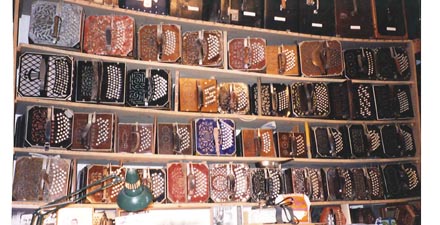
The fruit of decades of collecting, saved just for you:
the private 'Oriwohl collection' of musical instruments and memorabilia. The gallery of concertinas,
bandonions and accordions illustrates the evolutionary history of the instruments in chronological order
(as far as possible: the actual year of construction may not be the same as the year of design). Come on
in! Look over the shelves at what interests you - you can even unscrew the ends and look inside. Let your
curiousity be your guide!
Enjoy your virtual rummaging!

Commonly encountered terms:
Bisonoric: One button gives two different tones, one on the push, the other on the pull of the bellows.
Unisonoric: One button gives the same tone regardless of bellows direction.
(Tonal) Range: The range between the highest and lowest tones playable, regardless of how many tones in between them are available.
Tone stock: The number of different tones available (without duplicates) or their sequence (diatonic or chromatic).
Diatonic range: The tones which belong to a single musical scale (dia = progressing through).
Chromatic range: The tones which lie outside a single musical scale; these are used to give colour ('chroma = colour') and interest to the music.
Multi-reed: One button plays 2 or more tones simultaneously (often tuned in octaves: double-reed, triple-reed etc).
8' (8 feet): A term borrowed from organ manufacture where it refers to the length of
an organ pipe. Halving the pipe length raises the tone an octave higher (4'), and doubling it lowers it
an octave (16'). In Bandonion terminology it refers to the octave to which a reed is tuned.
more
8'+8': The paired reeds are tuned the same.
8'+8°: One reed in each pair is tuned slighlty 'off' to give a tremolo effect.
more
Shifts: Switches that engage and disengage extra reeds.
